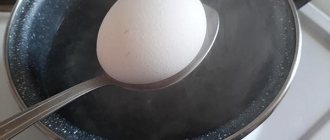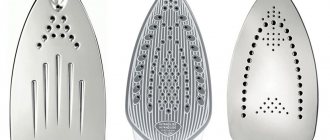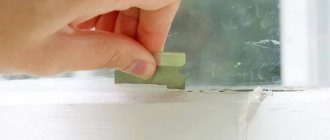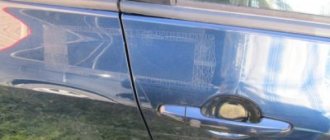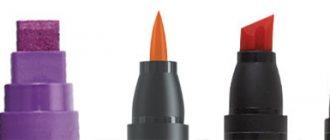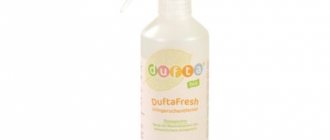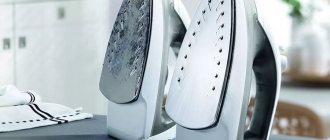This article describes how to properly care for nickel-plated and chrome-plated surfaces of various interior items and plumbing fixtures.
Nickel and chrome plating of various interior items and sanitary ware is rightfully considered one of the most practical and, with proper care, can serve for many years. It is thanks to its practicality and low cost that many household items have this coating - it could be a bathtub faucet, a door handle or furniture accessories. To ensure that such products do not fade over time and remain in good condition for a long time, you need to know how to properly care for them.
The first thing to keep in mind is that under no circumstances should you use any hard abrasive substances or use iron brushes or sandpaper when cleaning nickel and chrome plated surfaces. This leads to damage to the surface, leaving scratches.
In addition, it must be taken into account that the use of acid-containing substances, solvents, and various means for removing limescale is also unacceptable. Otherwise, we will not get a shiny, mirror-like surface, but a dull and darkened one.
What should you use to clean these surfaces? Of course, in the first place are branded, specially developed product care products with a nickel-plated and chrome-plated surface. But you can also use simpler products, but with a composition that implies the presence of soft or fine abrasives, organic solvents, ammonia, and wax. All this can be read on the label of the cleaning product manufacturer.
The most common, so to speak “at-home” method of cleaning a chrome surface is carried out using a soft cloth and a warm soapy solution. Moreover, if limescale has formed on the surface, you can get rid of it with the help of grape vinegar.
To clean nickel-plated surfaces, special pastes and liquid products are used, as well as regular chalk or a solution prepared in this way: add one teaspoon of salt to one tablespoon of vinegar.
Rust from a nickel-plated product can be easily removed using fat using the following method: you need to apply any animal or fish oil to the rust spots, and after a couple of days, thoroughly wipe the product with a soft cloth soaked in ammonia.
When using various purchased products to clean products, you should not leave them in contact with the surface for a long period of time; you must thoroughly rinse them with water after application after the time specified in the instructions.
Finally, it should be noted that the nickel-plated and chrome-plated surface must be cleaned as often as possible, without waiting for it to become “overgrown” with dirt and oxidation, and then it will last much longer.
The samovar is a symbol of Russian tea drinking, which used to be very popular. Nowadays it is not served on the table so often, but it is still considered that such tea is especially tasty and rich.
Features of the material
Stainless steel cookware is a success for a reason - the advantages of steel products have been tested for more than one generation. Housewives value shiny kitchen utensils for their lightness, durability, and ease of cleaning. The main six advantages of cookware are considered.
- Corrosion resistance. Stainless steel contains chromium. It is this element, when reacting with oxygen, that creates a protective anti-corrosion film on the surface of the material, which has the ability to self-renew.
- Strength and durability. Stainless steel is resistant to mechanical deformation: chips, scratches. With proper care, products made from this material can last for decades.
- Heat resistance. Utensils made of steel do not lose their functional characteristics over a wide range of temperatures: kitchen appliances made of stainless steel can be used at both low and high temperatures.
- Environmental friendliness. The high density of the material does not allow pathogenic microorganisms to accumulate on the walls of the dishes. Scientific research has confirmed the bacteriostatic properties of stainless steel.
- Versatility. Steel cookware can be used for cooking food on gas, glass-ceramic and induction cookers.
- Impeccable appearance. The metallic shine of steel utensils will fit into any interior: such utensils look stylish and presentable if you properly care for them.
Stainless steel cookware does not affect the taste of food during cooking or during long-term storage in it.
Possible damage and contamination
Kitchen utensils made of steel retain their advantages only with proper care. If the surface of the product is damaged, dirt and grease accumulate on the walls of the kitchen utensil. This leads to the following problems:
- anti-corrosion properties are lost;
- wear resistance decreases;
- food begins to burn during heat treatment;
- the appearance becomes dull and unsightly.
Improper use can lead to three “diseases” of steel cookware.
- Nagar. Immediately uncleaned, the yellow coating formed by splashes of fat gradually becomes a hard, dark-colored “shell.”
- "Rainbow" on the bottom and walls. The film lining the product thickens when heated to 100 °C. When the layer's density increases tenfold, it turns blue or rainbow. This affects not only the appearance of the product, but also its functionality.
- Scale. Limescale is a deposit of calcium carbonate in water. The metal reacts with impurities contained in tap water: dotted spots appear on the inner surface of the product. When boiling, chlorine and mineral salts settle on the bottom and walls, forming spiral-shaped “patterns”.
To extend the life of kitchen utensils and maintain their appearance, it is worth providing stainless steel utensils with proper care.
Secrets of care
Stainless steel cookware needs to be maintained regularly. Three simple rules will help preserve the functionality and decent appearance of the dishes for a long time, and will not allow severe contamination.
- Regular cleansing. After each use, the product must be washed with a soft sponge and detergent with a gentle formula. This measure will prevent the appearance of stains and eliminate the need to scrape off pieces of dried food.
- Delicate wash. It is recommended to wash stainless steel utensils by hand; you should not use a dishwasher.
- Perfect dryness. If you leave a stainless steel appliance to dry naturally in the open air, the dishes may become covered with dark spots. Therefore, each time after washing, the product must be wiped dry with a clean towel.
When cooking, you can only use filtered water and do not heat an empty pot or frying pan for a long time. If you cannot avoid contaminants that a regular detergent cannot deal with, you need to resort to stronger methods.
Principles of cleansing
Cleaning steel utensils is based on four principles.
- We say a firm “no” to harsh methods. Do not use products containing abrasives; the use of metal sponges and brushes is also unacceptable.
- We choose products without ammonia and chlorine. These components may damage the surface of products.
- We use salt and soda only in warm and hot water. Adding large amounts of these products to cold water can cause dark spots to appear on stainless steel cutlery.
- Don't put off cleansing. “Fresh” contamination is much easier to remove.
You can fight pollution using store-bought or folk remedies.
We clean dishes with ready-made cleaning products
Polish the surface. If the dishes are not very dirty and greasy, you can simply use alloy polish. Polish for chrome plated surfaces is also perfect for nickel plated cookware. Apply not too much product to the surface, and then polish with light movements.
Look for an antimicrobial disinfectant raft cleaner at the mall. Apply this composition to very dirty areas of the cookware, especially to the yellowed parts that often form on nickel-plated surfaces of the cookware. Leave the product to work for 30 minutes. In addition, the anti-corrosion agent WD-40 is often used, which destroys oil stains.
An excellent option for cleaning nickel-plated cookware, photos of which are presented in the article, is a cleaning agent for stoves and ovens; it can be extremely useful in removing grease deposits.
It would be good to first test this method on a not very large area of the plane. If the nickel plating of the cookware is extremely thin, then use a metal sponge or scraper with care so as not to damage the surface. If the metal is stable, then you can carefully rub the greasy area with the product, then with an iron sponge and then polish it.
What to choose in the store
When you go shopping for a stainless steel dish cleaner, you need to:
- analyze reviews - recommendations will help you make the right choice;
- study the composition - the product should not contain abrasives, chlorine and ammonia;
- pay attention to the markings - the manufacturer must indicate for which materials a particular product is suitable.
It is advisable to give preference to proven means. Judging by the reviews, they have proven themselves well:
- "Dafor";
- "The Shine of Steel";
- "Selena";
- "Shumanite";
- Luxus;
- Help;
- Delu;
- Dr. Beckmann;
- Fresh.
Some housewives use oven cleaners to clean stainless steel cookware from grease and other contaminants. They apply the gel for 15-20 minutes, then wash the product with regular detergent.
How to wash stainless steel dishes using your grandmother's experience
You can clean stainless steel cookware from dark stains, carbon deposits and other contaminants using improvised means that will ensure the most delicate effect.
Universal solution: boiling
Boiling is the most effective way to clean stainless steel kitchen utensils. This method will successfully handle:
- soot;
- scale;
- greasy yellow coating;
- other complex contaminants.
If you need to clean the inside of a pot or pan, three simple steps will help.
- Prepare the composition. Fill the contaminated dishes with a special solution.
- Put on fire. Wait for it to boil, boil for 15 minutes.
- Remove from heat, cool. Wash the product with detergent.
If you need to clean spoons, forks, as well as frying pans, pots, bowls and teapots not only from the inside, but also from the outside, follow the three-step instructions.
- Preparation. Pour the solution into a large heat-resistant container (you can use a bucket).
- Boiling. Immerse the dishes in the mixture and boil for five to 15 minutes.
- Rinse. Remove from heat, cool, and wash items with detergent.
How to prepare the composition for boiling? If the contamination is not severe, you can boil the dishes in clean water. To enhance efficiency, it is worth making a solution (of your choice):
- dishwashing detergent - two to four tablespoons per liter of water;
- vinegar - combine with water in a 1:1 ratio;
- laundry soap and PVA glue - dissolve a third of a bar of soap and a tablespoon of glue in 4 liters of water;
- soda ash, household soap and silicate glue - 100 ml of glue and soda each, a bar of soap per 10 liters of water.
Instead of dishwashing detergent, you can use liquid or crushed laundry soap in the same proportions.
It will cope well with light stains and remove “boiling apple” blackness. You need to peel the sour apples, add water, and boil stainless steel products in this solution for five to seven minutes. Instead of fruit peels, you can use potato peelings or finely chopped onions.
Anti-carbon pastes
Peculiarities. You can remove carbon deposits from a stainless steel pot or frying pan using homemade pastes.
Components to choose from:
- crushed activated carbon (30-40 tablets), mixed with water to a paste consistency;
- ground coffee beans mixed with water to form a thick paste.
Application
- Apply the composition in a thick layer to the contaminated areas.
- Wait 20-30 minutes.
- Wash the device with regular detergent.
Liquids from white deposits and scale
Peculiarities. You can remove scale from a stainless steel kettle using simple products. The concentration of citric acid is adjusted depending on the degree of contamination: from 15 to 50 g per liter of water. Turks and samovars made of stainless steel can be washed in a similar way.
Components to choose from:
- vinegar;
- citric acid solution;
- Coca Cola.
Application
- Pour the product into the “affected” product.
- Bring to a boil and simmer over low heat for a couple of minutes.
- Drain the mixture and add clean water.
- Boil and wash with regular detergent.
Methods for processing forks and knives
Four products will help clean stainless steel cutlery from black deposits and other contaminants.
- Vinegar or lemon juice. Apply the product to a soft cloth and wipe the devices. After half an hour, rinse with running water and wipe dry.
- Ammonia. High concentrations of ammonia are harmful to stainless steel products. However, if you mix five to ten drops in a liter of water, you can get a solution that will perfectly clean cutlery. It is enough to rub the products with it and then wash with regular detergent.
- Non-abrasive toothpaste or tooth powder. Using a soft cloth, wipe the devices and wash with running water.
- Mustard powder. Dilute the product with a small amount of warm water to obtain a creamy mass. Immerse cutlery in the composition for a quarter of an hour, then rinse with running water.
How to clean rust from a chrome faucet?
Mix equal parts water and vinegar in a bucket or sink. Dampen a sponge with the solution and wring it out, then rub it on stubborn stains to work the diluted vinegar on them. When you are satisfied with the result achieved, rinse the chrome surface again with clean water.
Interesting materials:
How to find out which processor is in the system unit? How can I find out what my ping is? How can I find out which dual-core processor I have? How to find out PC specifications? How to find out the Office 2022 key? How to find out the Ogrn code? How to find out the OKATO code of an organization by TIN? How to find out the UPFR code of an organization? How to find out the number of children in the palm of your hand? How can you tell if a hen is a laying hen or not?
The final touch: adding shine
Polishing stainless cookware to a mirror shine will not only return the items to their original appearance, but will also increase the service life of the appliances. To carry out the “procedure”, you need to treat the device with a soft sponge moistened with:
- vinegar;
- a solution of lemon juice (a tablespoon per glass of water);
- commercial steel polish.
After grinding, you need to rinse the treated dishes with running water and wipe dry. To give stainless steel kitchen utensils a glossy shine, you can also wipe the items with raw potato wedges.
Chemical polishing of cutlery will help get rid of yellow deposits and other contaminants. However, this method can only be carried out by professionals: it cannot be used at home. Its essence is that the dishes are immersed in a special chemical composition, which smoothes the surface of the metal, removing scratches and removing dirt.
When thinking about how to clean stainless steel cookware, you need to take into account not only the features of caring for this metal, but also the fact that kitchen utensils come into direct contact with food. Therefore, it is advisable to give preference to environmentally friendly methods, and if you use household chemicals, then only those that are intended for cleaning dishes.
About metal
Nickel has received numerous accusations of harm and danger to the human body. Throwing in false information distorts the overall picture. As a result, products containing nickel fall out of favor with consumers.
Meanwhile, the metal, which is distinguished by its hardness, ductility, and excellent malleability, is widely used to produce various alloys, including the well-known stainless steel. Thanks to nickel, the compositions obtain the required characteristics: they become harder and more corrosion-resistant.
This is interesting! In industry, the number of alloys containing a certain amount of silver metal is more than four thousand. Among them are copel, nichrome, invar, cupronickel, monel and many others.
Most often, in addition to nickel, the composition includes chromium, copper, iron, and molybdenum.
Alloys are used in a variety of areas of life: construction, mechanical engineering, instrument making, medicine and many others. They are used to mint coins, make dentures, implants, make wire, springs, wires, furniture and sanitary fittings and, of course, produce dishes.
